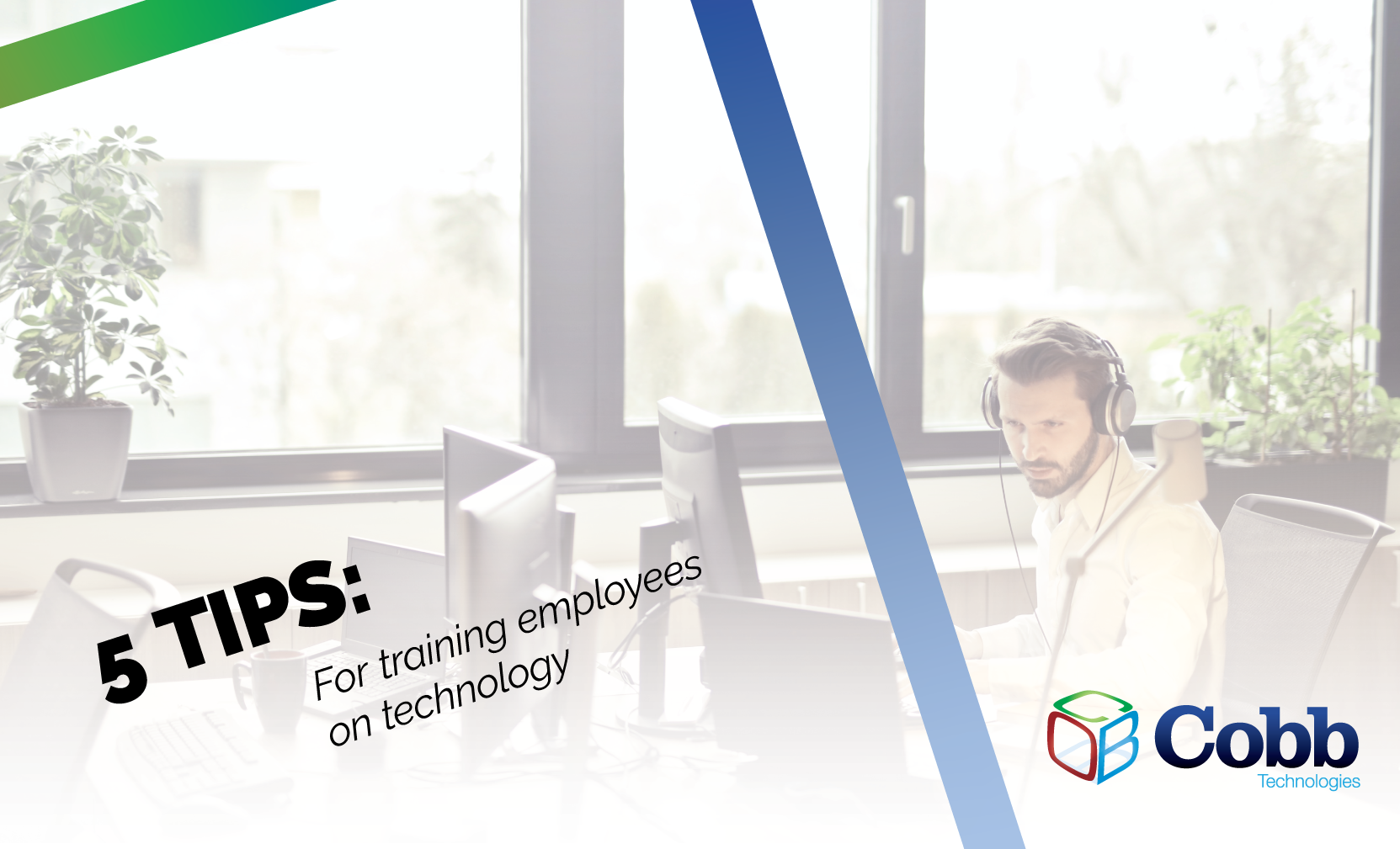3 min read
Building Culture That Works: Cobb Tech Named One of VA's Best
Cobb Technologies has been honored as one of the 2025 Best Places to Work in Virginia by Virginia Business and Best Companies Group. This prestigious...
3 min read
 Jason Holmes
Apr 1, 2021 1:20:28 PM
Jason Holmes
Apr 1, 2021 1:20:28 PM

Adopting new technology in your organization has the power to transform the way you do business, but only if your employees actually use the solutions made available to them. As creatures of habit, it can be exceedingly difficult to bring employees onboard with a new software, device, or other new piece of technology.
Employees are often reticent to change their work habits for two reasons: they don’t see the added value, and they lack adequate training on the new technology made available.
Often, training opportunities are abundant and readily available for employees to utilize when a new program or device is rolled out, but no matter how many training sessions an employee attends, if the training isn’t done right, it won’t stick. In fact, when presented with a difficult-to-understand training session, employees can build resentment to a new solution implemented with the intent of making their working lives simpler and more efficient.
Below, you’ll find five things you can do to make your training more effective — and best of all, they’re all free to implement.
Most organizations implement new ideas and internal solutions via a top-down approach. While this does help to streamline initiatives, it can create a situation where the solution is less-than-useful for those who will mainly be using it.
When researching for a new device or application, make sure to involve the employees who will be using it during the discovery process. This will ensure the changes made to a workflow are helpful and needed by those who use the workflow, and will help to prevent any gaps in implementation.
This can range from complicated, in-depth analysis of the pros and cons of a CRM, or something as simple as the way a headset fits. If your customer service reps don’t like the way a headset fits, they’ll most likely stick with their old one, or, even worse, neglect to use it.
By involving your employees in the decision making process, you can ensure the money you spend on new technology products is never wasted, or unneeded.
Knowing how to work within an old system, and being unfamiliar with a new one is easily one of the most frustrating aspects for employees faced with a technology change. Because we build muscle memory when engaging with programs, it can be exceedingly difficult for an employee to find the “reply all” button on a new email client.
To compound the visual confusion we experience when faced with a new user interface, often we are forced to learn new language as well, creating a perfect storm of both not knowing where options are located, and what they are labeled as. Not only is this frustrating, this can be downright scary for employees who are familiar with the old way of doing things, which will dramatically reduce their productivity.
When finding a new application to replace an aging program, make sure to find one with the simplest user interface possible — it will save both you and your employees quite a few headaches.
Just as there will always be employees who struggle to catch up with changes to technology, there will be those who embrace it. Find these employees within your organization, and allot them dedicated time to share their knowledge with those who need more instruction.
While it may be tempting to continue training struggling employees yourself, it’s often more effective for your tech champions to do it themselves, as they have invaluable insight into what goes into their day-to-day tasks.
Every department within your organization will interact with technology in a slightly different way. When you break down your training sessions into smaller groups who work on the same projects, you are more able to pinpoint what they need to learn in order to adopt new technology.
For example, a group of sales reps will need to learn how to search through, and add contacts to a CRM, while account managers will focus on placing orders and maintaining billing through the CRM. If both of these departments are learning in the same place at the same time, they will be presented with information that does not apply to their position, and will not absorb the changes as readily as you would hope.
By breaking down into smaller groups, you can ensure your tech training is focused and efficient, greatly reducing the stress employees feel when presented with solutions that don’t affect their lives at the office.
Believe it or not, your marketing team may be your most valuable asset when it comes to training employees on new tech. Your marketing team can confer with your IT department, or your managed service provider, and create informational guides and documentation to help disseminate knowledge quickly and efficiently throughout your organization.
This also has the added benefit of training your marketing team on the new technology while they do what they’re good at — communicating ideas.
By following this guide, your chances of successfully adopting new technology throughout your organization are greatly increased. If you’re still facing difficulties, consider reaching out to a managed service provider, as they often offer services specifically for the training on new technology.

3 min read
Cobb Technologies has been honored as one of the 2025 Best Places to Work in Virginia by Virginia Business and Best Companies Group. This prestigious...

5 min read
Cobb Technologies is honored to hold the SWaM (Small, Women-owned, and Minority-owned Business) certification, awarded by the Commonwealth of...

5 min read
Every year, thousands of Veterans transition from military service to civilian careers in Virginia, bringing invaluable skills and experiences to...